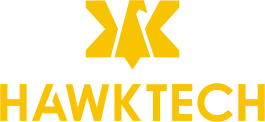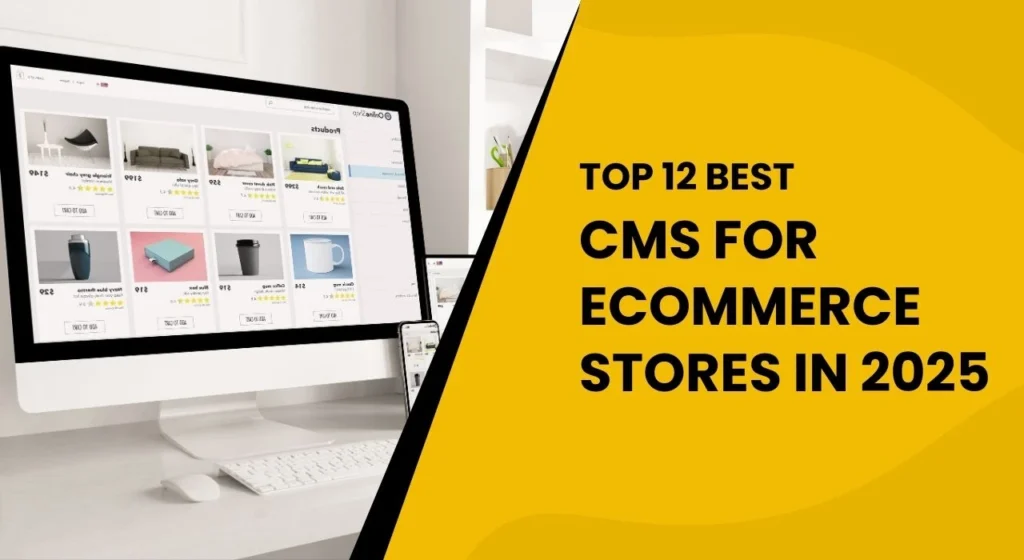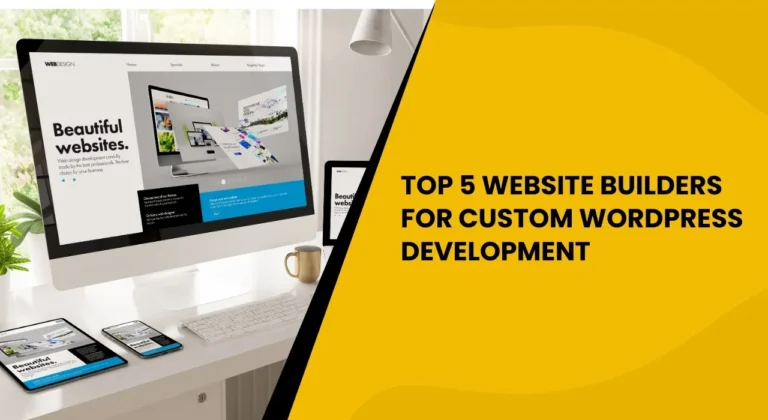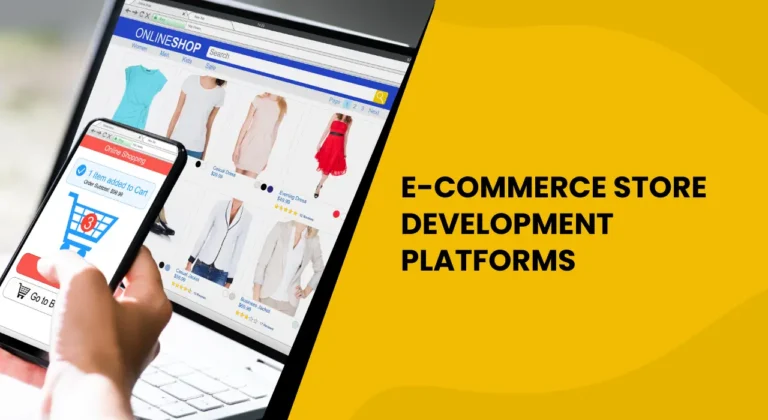Running an online store today means competing in a crowded, fast-changing digital marketplace. Your eCommerce CMS is more than just a website builder it’s the engine that powers your sales, branding, and customer experience. The right platform can boost your revenue, streamline your operations, and keep you ahead of the curve.
In this guide, we’ll explore the top 12 best CMS platforms for eCommerce in 2025, breaking down their features, benefits, and ideal use cases. Whether you’re a solo entrepreneur, a growing brand, or a global enterprise, you’ll find insights to help you choose the best eCommerce CMS for your needs.
What is an eCommerce CMS?
An eCommerce CMS (Content Management System) is software that helps you create, manage, and deliver content for your online store. Unlike basic website builders, an eCommerce CMS offers advanced tools for selling products, managing inventory, processing payments, and integrating with marketing and analytics platforms.

Typical features include:
- Product management: Add, edit, categorize, and display items.
- Payment processing: Securely handle transactions with multiple gateways.
- Inventory tracking: Monitor stock levels in real-time.
- Order management: Process, ship, and track orders efficiently.
- SEO tools: Optimize your store for search engines.
- Integrations: Connect to CRMs, ERPs, social platforms, and email marketing tools.
In 2025, the best CMS platforms are evolving with headless architecture, AI-driven personalization, and omnichannel capabilities to deliver seamless shopping experiences.
Why the Best CMS Choice Matters in 2025
Choosing the best CMS for your eCommerce business affects nearly every aspect of your operations:
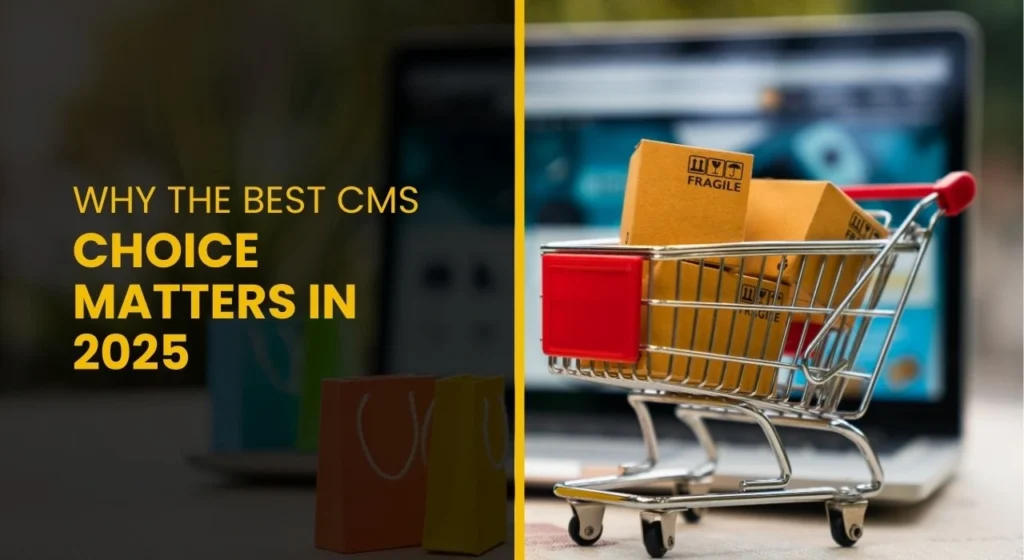
- User Experience (UX): A modern CMS ensures fast, responsive, and intuitive shopping.
- Scalability: Your CMS should handle traffic spikes, seasonal sales, and long-term growth.
- Security: Cyber threats are increasing; a strong CMS protects customer data.
- SEO and Marketing: Built-in SEO tools and integrations improve visibility.
- Operational Efficiency: Automations reduce manual work and errors.
A poor choice can lead to slow loading times, clunky interfaces, and costly migrations later on.
List of Best CMS for eCommerce
Below are the leading eCommerce CMS platforms, including traditional, open-source, and headless solutions.
1. Shopify
At The Hawk Tech, we recognise Shopify as one of the most popular eCommerce CMS platforms, powering millions of stores with secure, fully hosted solutions.
Key Features:
- Drag-and-drop store builder.
- Integrated payment gateway (Shopify Payments).
- 8,000+ apps and integrations.
- Multi-channel selling (Amazon, Instagram, TikTok, etc.).
Pros:
- Quick setup with minimal tech skills needed.
- Reliable hosting and 24/7 support.
Cons:
- Transaction fees unless you use Shopify Payments.
- Less flexibility for deep customization without coding.
Best For:
Small to medium businesses that want to launch fast without managing servers.
Pricing: Starts at $39/month.
2. WooCommerce
WooCommerce is an open-source plugin for WordPress, turning it into a full-featured eCommerce CMS. It’s highly customizable and backed by a massive community.
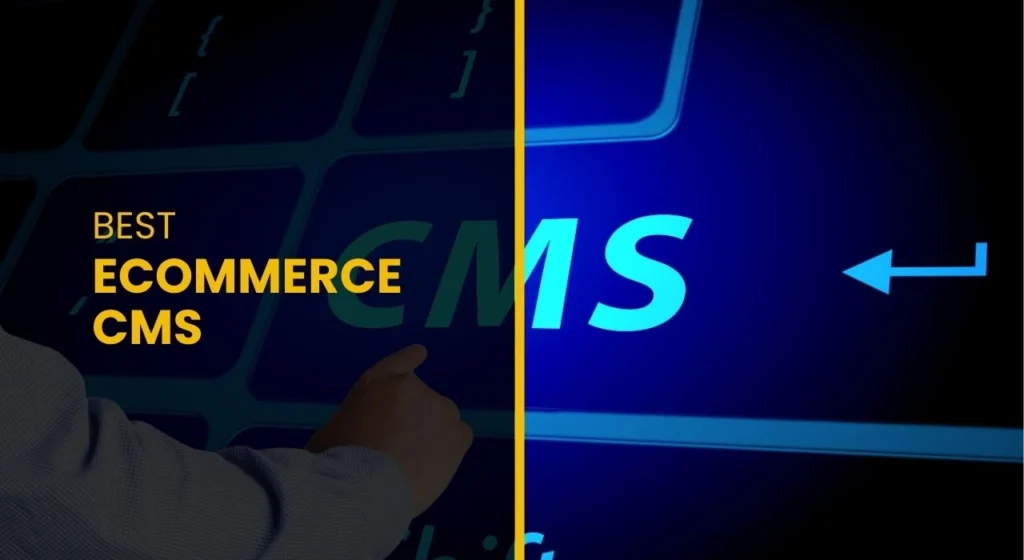
Key Features:
- 50,000+ WordPress plugins for customization.
- Wide range of payment gateway options.
- Built-in blogging for content marketing.
- Flexible shipping rules.
Pros:
- No license fees only hosting and extensions cost money.
- Full ownership and control over your data.
Cons:
- Requires more technical know-how.
- Hosting quality impacts performance.
Best For:
Businesses already on WordPress or those wanting total control over store design.
Pricing: Free core plugin; hosting and premium extensions extra.
3. Wix eCommerce
Wix offers a beginner-friendly drag-and-drop website builder with growing eCommerce capabilities. At The Hawk Tech, we offer professional web development services and also handle Wix.

Key Features:
- 500+ designer-made templates.
- Automated sales tax calculations.
- Built-in SEO wizard.
- Abandoned cart recovery.
Pros:
- No coding required.
- Built-in marketing tools.
Cons:
- Less scalable for very large catalogs.
- Limited backend customization.
Best For:
Small businesses and creatives selling physical or digital products.
Pricing: Business Basic plan starts at $27/month.
4. OpenCart
OpenCart is a lightweight, open-source eCommerce CMS with strong customization potential.
Key Features:
- Multi-store management from one dashboard.
- 13,000+ modules and themes.
- Detailed sales and customer reports.
- Multi-currency and multi-language support.
Pros:
- Free to download and use.
- Flexible for developers.
Cons:
- Requires manual hosting and updates.
- Limited support unless paid.
Best For:
Budget-conscious businesses with technical resources.
5. Magento (Adobe Commerce)
Magento is known for handling complex catalogs and large-scale operations.
Key Features:
- Advanced inventory and product management.
- Built-in B2B functionality.
- AI-driven product recommendations.
- Scalable for high traffic.
Pros:
- Extremely powerful and flexible.
- Strong security features.
Cons:
- High development and hosting costs.
- Steeper learning curve.
Best For:
Enterprises and fast-growing online retailers.
6. Shopware
Shopware blends traditional and headless commerce for flexibility.
Key Features:
- API-first architecture.
- Shopping experiences with rich media.
- SEO-friendly structure.
- Advanced rule-based pricing.
Pros:
- Great for storytelling and branding.
- Strong European market presence.
Cons:
- Smaller ecosystem than Shopify or WooCommerce.
Best For:
Brands expanding in Europe or running multi-language stores.
7. WordPress CMS
Recognised by The Hawk Tech, WordPress.org stands as the top CMS, adaptable into a robust eCommerce platform through powerful plugins.
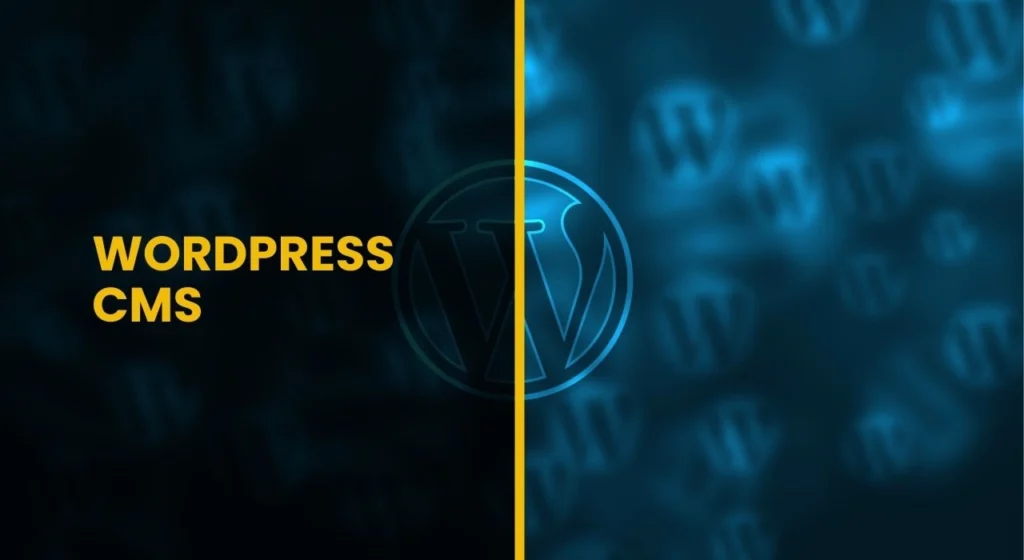
Key Features:
- Thousands of themes.
- Strong blogging and content marketing tools.
- Custom post types for unique product displays.
Pros:
- Full control and ownership.
- Massive community and support.
Cons:
- Hosting, security, and updates are your responsibility.
8. Drupal
Drupal is a secure, highly customizable CMS used by governments and enterprises.
Key Features:
- Advanced user permissions.
- Multilingual capabilities.
- Integration with headless commerce tools.
Pros:
- Highly secure.
- Suitable for complex workflows.
Cons:
- Steep learning curve.
- Requires experienced developers.
9. Contentstack
Contentstack is an enterprise-grade headless CMS.
Key Features:
- Omnichannel content delivery.
- Cloud-native infrastructure.
- Real-time collaboration.
Pros:
- Extremely scalable.
- Fast API responses.
Cons:
- Geared toward enterprises with bigger budgets.
10. Strapi
Strapi is a flexible, open-source headless CMS.

Key Features:
- REST and GraphQL APIs.
- Fully customizable admin panel.
- Self-hosted or cloud options.
Pros:
- Developer-friendly.
- No vendor lock-in.
Cons:
- Requires developer resources.
11. Sanity
Sanity is a structured content CMS with a headless approach.
Key Features:
- Real-time editing.
- Customizable schemas.
- Integration with any frontend framework.
Pros:
- Highly flexible.
- Great for multi-platform delivery.
12. Contentful
Contentful is a leader in headless CMS for global brands.
Key Features:
- Cloud-native with fast performance.
- Multi-language support.
- Integration with major eCommerce platforms.
Pros:
- Great for global scaling.
- Enterprise-grade security.
Comparison Table: Best CMS for eCommerce 2025
| Platform | Type | Best For | Pricing | Key Strengths |
|---|---|---|---|---|
| Shopify | Hosted | SMBs, quick launch | From $39/mo | Ease of use, apps |
| WooCommerce | Open-source | WordPress users | Free + hosting | Flexibility |
| Wix eCommerce | Hosted | Creatives, beginners | From $27/mo | Drag-and-drop |
| OpenCart | Open-source | Budget + dev teams | Free | Lightweight |
| Magento | Open-source | Enterprise | Custom | Scalability |
| Shopware | Hybrid | Europe/global | Custom | API-first |
| WordPress.org | Open-source | Content-heavy sites | Free + hosting | SEO-friendly |
| Drupal | Open-source | Enterprise security | Free | Customization |
| Contentstack | Headless | Enterprises | Custom | Omnichannel |
| Strapi | Headless | Developers | Free/cloud | Custom APIs |
| Sanity | Headless | Structured content | From $99/mo | Real-time |
| Contentful | Headless | Global brands | Custom | Multi-language |
How to Choose the Best eCommerce CMS
When deciding, consider:
- Budget: Hosting, licensing, and development costs.
- Customization needs: How unique should your store be?
- Scalability: Will it handle future traffic and sales?
- Integrations: Marketing, analytics, and fulfillment tools.
- Technical resources: Do you have developers available?
Conclusion
Choosing the best CMS for your eCommerce store is a strategic decision. Shopify and WooCommerce dominate for SMBs. Magento, Drupal, and Contentstack serve enterprise needs. Headless options like Strapi, Sanity, and Contentful prepare you for the future.
Assess your goals, resources, and market then select an eCommerce CMS that will grow with you in 2025 and beyond.
Frequently Asked Questions
1. What is the easiest CMS for beginners?
Shopify and Wix are beginner-friendly with no coding required.
2. Which CMS is most customizable?
WooCommerce, Magento, and Strapi offer deep customization for unique projects.
3. Are headless CMS platforms better for eCommerce?
They’re better for multi-channel delivery and flexibility but require developer resources.
4. How much does an eCommerce CMS cost?
Costs range from free (OpenCart, WooCommerce) to thousands per month (enterprise headless solutions).
5. Can I migrate between CMS platforms?
Yes, but migration requires planning and can involve downtime.
